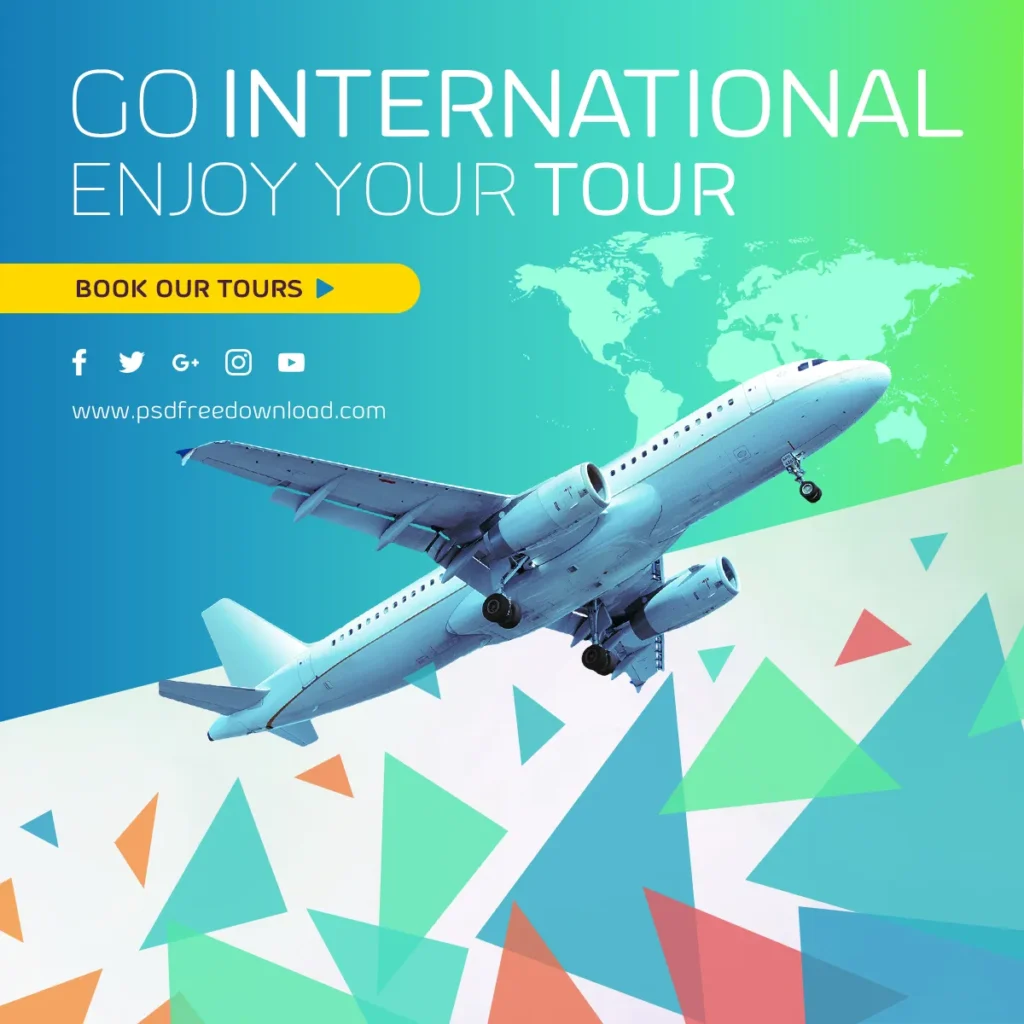Tourism and Its Economic Impact in Pakistan: A Complete Guide


Tourism isn’t just about scenic views or Instagram-worthy adventures. It’s a powerful economic engine — one that can uplift entire communities, stimulate infrastructure development, generate employment, and improve a country’s global perception. In Pakistan, this truth is only beginning to be realized.
As someone who has worked closely with stakeholders in Pakistan’s travel and tourism sector for years, I’ve seen firsthand how the right policies, grassroots efforts, and digital innovation can turn forgotten valleys and historic cities into thriving economic zones. This guide offers a detailed, realistic view of tourism and its economic impact in Pakistan — with data, context, and clear solutions.
Why Tourism Matters for Pakistan’s Economy
Tourism touches almost every corner of the economy. From the hotel you check into, to the taxi you ride, to the handicraft you buy from a roadside vendor — every rupee spent by a tourist creates a ripple effect. For a developing country like Pakistan, this ripple can become a wave.
- GDP Contribution: Tourism contributed around 6.9% of GDP in 2019. While the number dropped during COVID, it began recovering in 2022–2024 with renewed domestic and international interest.
- Employment Generation: The industry supports hundreds of thousands of jobs — directly through travel businesses and indirectly through supply chains like agriculture, construction, and retail.
- Foreign Exchange: Tourists bring in valuable foreign currency, helping improve Pakistan’s balance of payments and strengthening the rupee.
- Soft Power & Cultural Exchange: Tourism improves Pakistan’s global image and fosters diplomatic goodwill, especially among the Pakistani diaspora and regional neighbors.


Tourism’s Direct Contribution to Pakistan’s GDP
Tourism’s GDP contribution isn’t just a theory — it’s measurable. According to data from the World Travel & Tourism Council (WTTC) and Pakistan’s own Bureau of Statistics:
Latest Reported Figures (2019–2024)
- In 2019, tourism made up an estimated 6.9% of Pakistan’s GDP.
- Due to COVID-19, this figure dropped to 3.7% in 2020.
- In 2022, the sector started recovering, with early estimates placing its share at around 5.9%.
- Projections for 2024 indicate continued growth, especially with improved visa policies and domestic tourism activity.
This growth is not just driven by foreign tourists. Domestic tourism plays a huge role — especially with more Pakistanis exploring their own country post-pandemic. Festivals, road trips, religious pilgrimages, and social media-fueled travel trends are all part of the surge.
Regional Comparisons: Where Pakistan Stands
Pakistan still lags behind many of its South Asian neighbors in terms of tourism’s share of GDP. Here’s how it compares:
- Sri Lanka: Over 12% of GDP (pre-crisis)
- Nepal: Around 8% of GDP
- India: Over 9% of GDP
- Pakistan: Around 6–7% (with major potential)
Why the gap? Infrastructure, international perception, limited global marketing, and underutilized resources. But with the right investment and public-private collaboration, this gap can close fast.


Employment Generation Through Tourism
One of the most immediate and visible benefits of tourism is job creation. In a country like Pakistan where youth unemployment and underemployment are pressing issues, tourism presents an inclusive solution — especially for women, students, and rural communities.
Direct vs Indirect Job Creation
Tourism generates both direct and indirect employment:
- Direct jobs: Tour guides, hotel staff, drivers, chefs, travel agents, and hospitality managers.
- Indirect jobs: Farmers supplying produce to hotels, artisans selling crafts, tailors making uniforms, digital marketers promoting destinations, and construction workers building guesthouses and resorts.
According to the World Travel & Tourism Council (WTTC), the travel and tourism sector in Pakistan supported over 3.8 million jobs in 2019, which is expected to rise with proper recovery efforts. This figure includes formal and informal sector employment.
Youth & Women in Tourism Employment
Tourism offers rare flexibility in employment types — from full-time to freelance, seasonal, and project-based roles — which is ideal for women and youth entering the workforce. It also promotes entrepreneurship through homestays, food carts, travel vlogging, and adventure startups.
Example: In Hunza, women-run guesthouses and cafés have become cornerstones of the local tourism economy. Not only do these ventures provide income, but they also elevate the status of women in the community, encourage skill development, and retain cultural authenticity.
Tip: TrulyPakistan’s upcoming initiative in partnership with local universities aims to train and place youth micro-entrepreneurs in eco-tourism, digital storytelling, and hospitality management across Pakistan’s lesser-known destinations.


Tourism’s Role in Foreign Exchange and Local Investment
Tourism doesn’t just bring people — it brings money. Every international tourist that arrives spends on accommodation, transport, food, shopping, and entry tickets. This expenditure injects foreign currency directly into Pakistan’s economy.
Foreign Tourist Spending & Forex Gains
As per the State Bank of Pakistan (SBP), international tourism receipts — the money spent by foreign tourists in Pakistan — reached over $1.1 billion USD in 2019. These earnings support the current account balance and reduce pressure on foreign reserves.
Key Spending Categories:
- Airfare & in-country transport
- Hotel bookings & accommodations
- Souvenirs, crafts, and local goods
- Cultural and heritage site entry fees
- Food & culinary experiences
With recent improvements like visa-on-arrival for 50+ countries and e-visa access for 175 countries, inbound tourism has the potential to multiply — and with it, Pakistan’s forex earnings.
Domestic Investment in the Tourism Ecosystem
Tourism also drives local investment. Entrepreneurs and small businesses are investing in:
- Eco-lodges and boutique stays in Skardu, Swat, Kalash, and Neelum Valley
- Digital platforms like FindMyAdventure, RoamAround, GoZayaan, and TrulyPakistan
- Transport upgrades such as off-road rental services, shuttle apps, and electric bike tourism
- Food tourism ventures like food tours, cultural cooking classes, and popup kitchens
This local investment not only boosts economic circulation but also encourages community-led tourism models that keep profits within the region — a key principle of sustainable development.


Drivers of Tourism Growth in Pakistan
Pakistan is one of the most geographically and culturally diverse countries in South Asia — and that diversity is its greatest tourism asset. The range of experiences, from snow-capped mountains to 5,000-year-old ruins, makes the country a rare all-in-one destination for adventure, spiritual, and heritage tourism.
Natural Beauty and Adventure Tourism
Pakistan is home to some of the highest mountains in the world, including K2, Nanga Parbat, and Rakaposhi. For trekkers, climbers, and nature lovers, these ranges are global attractions. In recent years, destinations like Skardu, Hunza, Fairy Meadows, and Deosai Plains have drawn thousands of domestic and international visitors.
- Activities driving economic benefits: Jeep safaris, guided trekking tours, camping sites, and mountain biking trails
- Emerging hotspots: Shandur (polo festival), Kumrat Valley, Swat’s hiking circuits, and Balochistan’s Hingol National Park
These adventure activities contribute to job creation for porters, guides, drivers, and outfitters — often in areas with limited employment opportunities.
Religious, Cultural, and Heritage Tourism
Pakistan holds deep significance for Buddhists, Sikhs, Hindus, and Muslims. Sites like:
- Kartarpur Corridor (Sikh heritage)
- Takht-i-Bahi & Taxila (Buddhist ruins)
- Makli Necropolis, Mohenjo-Daro, and Harappa (Indus Valley civilization)
- Badshahi Mosque, Multan’s shrines, and the Wazir Khan Mosque (Islamic architecture)
These attract pilgrims, researchers, and culturally curious travelers. Pakistan’s Sufi shrines and local festivals also draw in thousands annually, generating seasonal income for local communities and artists.
Example: The annual Urs of Lal Shahbaz Qalandar in Sehwan supports hospitality businesses, food vendors, transport services, and artisans from across Sindh.
Government Initiatives and Policy Shifts
In recent years, Pakistan has taken several steps to make tourism easier and more appealing, including:
- E-Visa Access: Available for citizens of 175 countries
- Visa-on-Arrival: Available for 50+ countries
- National Tourism Coordination Board (NTCB): Tasked with streamlining provincial efforts
- PTDC Reforms: Revival of the Pakistan Tourism Development Corporation with focus on PPPs
- Digital Campaigns: #DiscoverPakistan and #BeautifulPakistan used in official tourism marketing
These initiatives aim to improve Pakistan’s global perception, simplify the entry process for tourists, and encourage investment in new tourist zones like Galiyat, Gilgit-Baltistan, and the Makran coast.
Challenges Hindering Tourism’s Economic Potential
Despite strong natural and cultural assets, Pakistan’s tourism sector still faces major hurdles that prevent it from achieving its full economic potential.
Infrastructure Gaps and Accessibility Issues
Poor road networks, unreliable public transport, and the lack of clean, affordable accommodations are common complaints — especially in emerging destinations. Many top-tier spots remain difficult to access without a private 4×4 vehicle or local contact.
- Lack of signages and tourist maps
- Limited clean restrooms and waste disposal facilities
- Inconsistent internet and mobile network coverage
Such gaps discourage international visitors and limit the flow of tourism revenue to remote communities that could benefit most.
Political Instability and Safety Perception
Pakistan has improved its internal security situation significantly in the past decade, yet global perception continues to lag. Travel advisories, visa processing delays, and negative media portrayal often deter international travelers — especially those unfamiliar with the region.
Solution: Tourism-specific security briefings, digital awareness campaigns, and storytelling from influencers who have experienced Pakistan safely can help counter the outdated narratives.
Environmental Degradation and Over-tourism Risks
Increased tourism without proper planning has resulted in:
- Plastic waste in lakes and valleys
- Overcrowding in narrow regions like Murree and Naran
- Damage to fragile ecosystems in alpine zones
Sustainable tourism guidelines — including waste regulation, eco-lodge certifications, and tourist caps in high-sensitivity areas — are still missing or poorly enforced.

The Path Forward: Sustainable and Inclusive Tourism Growth
If Pakistan wants to unlock tourism’s full economic potential, growth must be managed responsibly. This means embracing practices that protect the environment, uplift local communities, and ensure long-term viability of tourist zones — especially as climate change and over-tourism threaten fragile ecosystems.
Green Jobs and Climate-Smart Destinations
Sustainable tourism isn’t just a trend — it’s a necessity. By investing in climate-resilient tourism infrastructure and training locals in eco-friendly practices, Pakistan can create thousands of green jobs while preserving its natural assets.
- Solar-powered lodges in Gilgit-Baltistan
- Zero-waste tour operators in Swat and Hunza
- Plastic-free trails in Ayubia National Park and Deosai Plains
TrulyPakistan’s Take: We advocate for a certification system for sustainable lodges and responsible travel operators — enabling tourists to support the right businesses and encouraging the market to reward eco-conscious efforts.
Digital Innovation and Smart Tourism in Pakistan
Pakistan’s youth-led digital economy can drive smart tourism through:
- AI-powered trip planners and virtual tour apps
- Geo-tagged heritage archives and digital storytelling hubs
- Smart signage and augmented reality (AR) for cultural sites
Startups like TrulyPakistan, Ghoomo.pk, and GoZayaan are already testing these models — but we need nationwide infrastructure, training, and investment to scale impact.
Policy Recommendations to Boost Economic Impact
Pakistan can’t rely on natural beauty alone. Here are key policy actions that can help tourism fuel economic development more effectively:
- Public-Private Partnerships (PPPs): Co-investment in tourist zones, access roads, and rest stops
- Tourism-specific microfinance: Credit programs for small operators and women entrepreneurs
- Integrated Tourism Master Plan: Province-wise planning with national coordination
- Safety and certification standards: Trained guides, disaster response units, clean certification for accommodations
With clear rules, incentives, and monitoring systems, the government can make tourism a central pillar of economic growth — not just in policy papers, but on the ground.
Why Tourism is Pakistan’s Untapped Economic Powerhouse
Tourism is more than sightseeing. It’s an engine that powers small towns, creates jobs for youth, attracts investment, and reshapes how the world sees Pakistan. With its towering peaks, deep cultural roots, and growing digital talent, Pakistan has everything it needs to become South Asia’s next tourism success story.
But to get there, we must act strategically — with data, with community input, and with long-term vision.
TrulyPakistan.net is committed to supporting this vision through tourism research, tech advocacy, community storytelling, and startup support. If you’re a student, entrepreneur, policymaker, or traveler — join us. Share your insights, explore new models, and help shape the future of tourism in Pakistan.
Let’s not just host visitors. Let’s build destinations that uplift everyone.
Sources:


